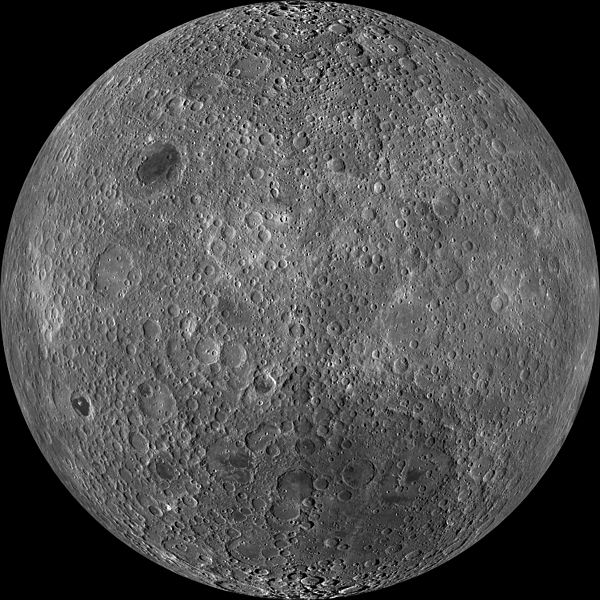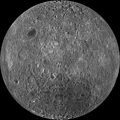Barakas:Moon Farside LRO.jpg

Takaran tilikan ngini: 600 × 600 piksal. Risulusi lain: 240 × 240 piksal | 480 × 480 piksal | 768 × 768 piksal | 1.024 × 1.024 piksal | 2.048 × 2.048 piksal | 18.000 × 18.000 piksal.
Ukuran asli (18.000 × 18.000 piksel, ukuran barakas: 85,34 MB, tipe MIME: image/jpeg)
Riwayat barakas
Klik pada tanggal/waktu gasan manjanaki barakas ngini wayah itu.
| Tanggal/Waktu | Miniatur | Matra | Pamakai | Ulasan | |
|---|---|---|---|---|---|
| wayahini | 20 Marit 2014 07.47 |  | 18.000 × 18.000 (85,34 MB) | Huntster | High resolution mosaic. |
| 9 April 2011 12.12 |  | 1.600 × 1.600 (1,44 MB) | Bubba73 | {{Information |Description ={{en|1=Far side of the Moon, by NASA's Lunar Recon. Orbiter}} |Source =http://apod.nasa.gov/apod/image/1104/farside_lro1600.jpg |Author =NASA - LRO |Date =2011? |Permission = |other_versions = } |
Tautan barakas
Tungkaran nangini mamakai barakas ngini:
Pamakaian barakas global
Wiki lain nangini mamakai barakas ngini:
- Pamakaian pada af.wikipedia.org
- Pamakaian pada az.wikipedia.org
- Pamakaian pada be.wikipedia.org
- Pamakaian pada bn.wikipedia.org
- Pamakaian pada bs.wikipedia.org
- Pamakaian pada ca.wikipedia.org
- Pamakaian pada cs.wikipedia.org
- Pamakaian pada de.wikipedia.org
- Pamakaian pada en.wikipedia.org
- Pamakaian pada en.wikibooks.org
- Pamakaian pada en.wikiversity.org
- Solar System, technical/Moon
- User:Marshallsumter/Radiation astronomy2/Visuals
- Draft:Original research/Planets
- User:Marshallsumter/Radiation astronomy2/Visuals/Quiz
- User:Marshallsumter/Rocks/Rocky objects/Astronomy
- User:Marshallsumter/Radiation astronomy/Courses/Principles/Hourly 2
- User:Marshallsumter/Radiation astronomy/Courses/Principles/Midterm quiz
- User:Marshallsumter/Radiation astronomy/Courses/Principles/Final quiz
- Titan/Quiz
- User:Marshallsumter/Rocks/Rocky objects
- Draft:Enceladus/Quiz
- Moon/Quiz
- Stars/Sun/Heliology/Quiz
- Earth/Quiz
- Stars/Reds/Quiz
- Draft:Dione/Quiz
- User:Marshallsumter/Radiation astronomy2/Scattered disks/Quiz
- User:Marshallsumter/Radiation astronomy1/Kuiper belts/Quiz
- Liquids/Liquid objects/Moon
- User:Marshallsumter/Radiation astronomy/Craters
- Pamakaian pada es.wikipedia.org
- Pamakaian pada et.wikipedia.org
- Pamakaian pada fa.wikipedia.org
Lihat labih banyak pamakaian glubal matan barakas ngini.


